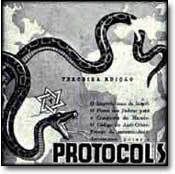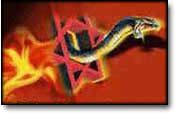Qalunya (Arabic: قالونيا, also transliterated Qaluniya, Colonia and Kolonia) was a Palestinian Arab village located 6 kilometers (3.7 mi) west of Jerusalem.[2]
Prior to the village's destruction in 1948, with the exception of 166 dunams, Qalunya's land was privately owned: 3,594 dunams were owned by Arabs, while 1,084 dunams were owned by Jews.[2]
Location
Qalunya stood on a mountain slope, facing southwest; Wadi Qalunya passed through its eastern edge. The village lay on the Jerusalem-Jaffa highway, and a dirt path linked it to its neighboring villages.[3] Qalunya was located near the Jewish town of Motza. Motza is now an outlying neighborhood of Jerusalem, and ruins of demolished buildings from Qalunya are present near Motza, covered in vegetation, just off the main highway between Jerusalem and Tel Aviv.
History
Qalunya is identified with the Canaanite town of Mozah (Joshua 18:26), its name was found stamped on pottery handles in Tall al-Nasba. After A.D. 71 Vespasian settled 800 Roman soldiers in the town, which became a Roman settlement known as Colonia Amosa or Colonia Emmaus.[3]
The word colonia produced the Byzantine name, Koloneia, for the site. The status of the site in the early Islamic period has not been established, but the name was preserved in Crusader times as Qalonie or Qalunia and in Arabic as Qalunya. Mujir al-Din al-Hanbali (d.1522) reported that in 1192 it was a village near Jerusalem.[4]
In 1596, Qalunya was a village in the Ottoman Empire, nahiya (subdistrict) of Jerusalem under the liwa' (district) of Jerusalem, and it had a population of 110. It paid taxes on a number of crops, including wheat, barley and olives, as well as on goats, beehives and molasses.[5]
In the late nineteenth century, Qalunya was described as a moderate-sized village perched on the slope of a hill, 300 feet (91 m) above a valley. Travelers reported that it had a "modern" restaurant. The villagers tended orange and lemon trees that were planted around a spring in the valley.[6]
During the 1929 Palestine riots, several residents of Qalunya attacked an outlying house belonging to the Maklef family, killing the father, mother, son, two daughters, and their two guests. Three children survived by escaping out a second-story window; one, Mordechai Maklef, later became Chief of Staff of the Israeli Army. The attackers included the lone police officer and armed man in the area, as well as a shepherd employed by the Maklef family. The village was subsequently abandoned by Jews for a year's time.[7]
1948, and after
On 11 April 1948, as part of Operation Nachshon, a Hagana forces entered the village and blew up 50 houses.[8] Qalunya was one of four villages that were systematically destroyed by Hagana units in this fashion in the immediate wake of the Deir Yassin massacre; the others being, Beit Surik, Biddu and Saris.[8]
References
1 Morris, 2004, p. xx village #359. Also gives the cause of depopulation.
2 a b "Qalunya". Palestine Remembered. Retrieved 2008-03-18.
3a b Khalidi, 1992, p. 309
4Al:Khalidi 1968:181, Cited in Khalidi, 1992, p.309
5Hütteroth, Wolf-Dieter and Kamal Abdulfattah, 1977, Historical Geography of Palestine, Transjordan and Southern Syria in the Late 16th Century. Erlanger Geographische Arbeiten, Sonderband 5. Erlangen, Germany: Vorstand der Fränkischen Geographischen Gesellschaft. p. 118. Quoted in Khalidi, 1992, p. 309
6Conder, Claude Reignier and H.H. Kitchener: The Survey of Western Palestine. London:Committee of the Palestine Exploration Fund. (1883) III:17. Quoted in Khalidi, 1992, p.309
7 Segev, Tom (1999), One Palestine, Complete, Metropolitan Books, p. 324, ISBN 0-8050-4848-0
8 a b Pappe, 2006, p. 91.
http://en.wikipedia.org/wiki/Qalunya
Thursday, 11 April 2013
65 years ago today Zionist forces blew up 50 houses in the ethnically-cleansed Palestinian village of Qalunya
Posted @
16:13
![]()
Subscribe to:
Post Comments (Atom)
![[9_10_s22.jpg]](https://blogger.googleusercontent.com/img/b/R29vZ2xl/AVvXsEjTXnQay9wzz0E6nVHrVhaHKoq_zYXDqZjijHlNDQzj90MZzInrCuVX4ciFYCiBfZ7lhlgr2bBhhnl7ddWbhdih5JbXjQYbA605TNyiq046bQqjG2A4S-nHTmh1VBTQSG6tmc23wq47QQ/s1600/9_10_s22.jpg)




No comments:
Post a Comment